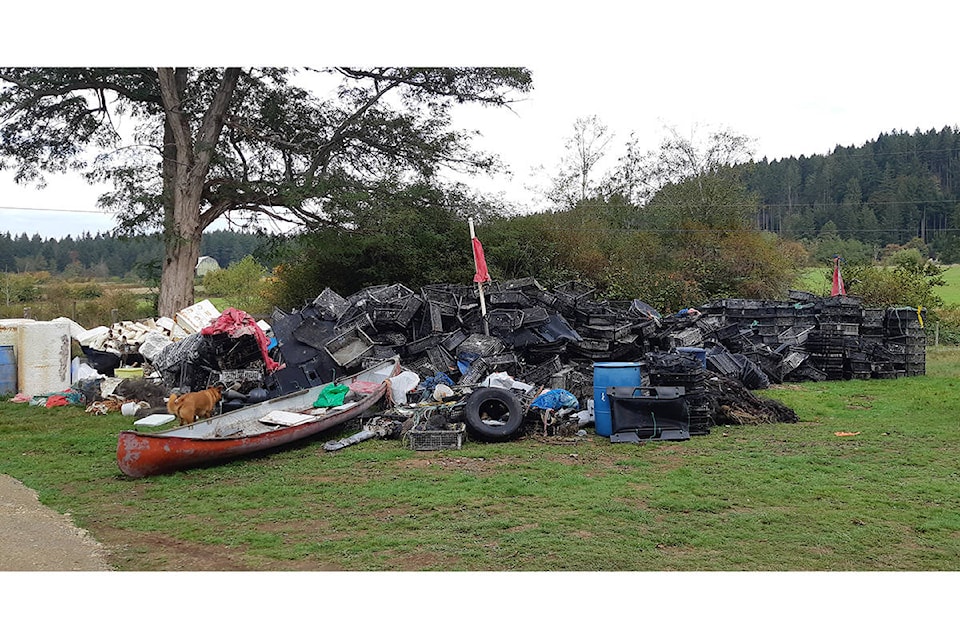Dear editor,
This year’s beach cleanup on Denman Island collected between six and seven tonnes of plastic debris, almost all from the shellfish industry in Baynes Sound. Over the last 16 years, volunteers have gathered approximately 78 tonnes from just our half of Baynes Sound’s shoreline.
Because there is little monitoring and no consequences, too many shellfish growers don’t bother to collect their own plastic gear and garbage, which as most people know, contaminates these waters. It does give a person pause when you consider they are growing food in the midst of their own disintegrating plastic trash and netting.
So far it seems that Fisheries and Oceans Canada (DFO) has decided that the only way to get growers to clean up their own mess is to pay them. Unfortunately, DFO has neglected the bulk of the plastic debris that washes ashore, and instead paid the shellfish industry $350,000 to clean up plastic debris under the growers’ rafts. When you buy oysters or clams, remember, you have already paid the growers to clean up their own deep water debris.
Cleanup and recycling are part of any responsible business plan. This should not be incidental, or partial, but integrated into the way of doing business. This is common sense and protects shellfish growers’ business reputation and is a common courtesy to British Columbians, who lease their tenures to industry for just a few dollars per hectare. Any plan should protect the health of the surrounding ecosystem!
Preventing plastic debris from piling up in herring spawning and rearing grounds, salmon-bearing estuaries, sensitive salt marsh habitat, eelgrass beds, and forage fish spawning grounds should be something that we can all reasonably expect from shellfish growers.
Although the Fisheries Act mandates protection of important fish habitat, it is surprising that DFO is unable to prevent growers from degrading the intertidal with plastic trash and netting, year in, year out. We see it, and although we haul the plastic out, we know it can and should be done by growers. Whose interest is DFO protecting? Certainly not the interest of the public or the ecosystem.
Growers’ gear and equipment must be traceable and growers’ compliance to DFO’s Conditions of Licence must be monitored with the results made available to the public. Consumers, especially, have a right to know about whether a grower’s or processor’s environmental performance was good or bad before they purchase shellfish. We would like to support growers and processors who have excellent environmental performance results and can prove it when we check online.
Next time you’re buying shellfish from Baynes Sound, think about this: it’s the place where hundreds of community volunteers have laboured and cleaned up after the industry in order to protect the marine ecosystem and reduce plastic contamination of the oysters and clams.
Dorrie Woodward, chair, ADIMS
Denman Island
